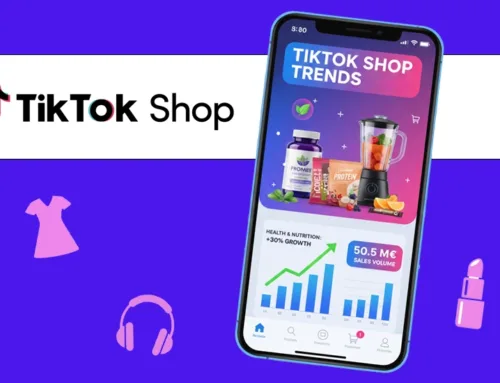By Yulia Arellano
What is Google Discover?
Google Discover is a personalized content stream that is currently displayed on mobile devices via the Google and Google Chrome apps for Android and iOS platforms. It is also available on some Android home screens. And now, in the spring of 2025, we learn that Google Discover is preparing to extend its presence to the Desktop environment (in the coming months!). This is a promising development that could considerably boost Discover’s role in content distribution strategies. For publishers who already exploit this lever, the arrival on Desktop means the opportunity to reach an even wider audience. For those who haven’t yet fully embraced it, the time has come to seriously consider its potential.
As a reminder, Google Discover uses machine learning algorithms to suggest relevant content to users, without them having performed a search. Content is proposed automatically, based on an analysis of the user’s interests, browsing history, geographical location and activity on platforms such as YouTube. In other words, Discover is able to anticipate users’ information needs even before they explicitly state them.
As a content creator and affiliate partner, you may be wondering how to get your content featured on Google Discover. In this article, we’ll share some tips on how to optimize your content for Google Discover, learn about affiliate link rules and how to increase your chances of being pushed by this feature.
The importance of Google Discover for publishers
Google Discover is an important feature for publishers, offering a unique opportunity to reach a large audience of potential readers interested in their content. Discover’s effectiveness is based on a sophisticated personalization algorithm that takes into account a variety of signals. These include user behavior, including search history, videos watched and apps used. The algorithm also analyzes interest in specific themes, whether travel, technology, health or other areas. In addition, it takes into account current events and trends, as well as the engagement potential of a piece of content, measured by indicators such as click-through rate, number of shares and time spent on the page. This means that if Google decides to push your content, it will automatically reach an affinity audience.
This approach is fundamentally different from traditional search: Discover adopts a “push” (proactive) logic, as opposed to the “pull” (reactive) nature of search. As a result, the content that appears in Discover must have an immediate capacity for attraction, without depending on the presence of specific keywords in a user query.
In fact, Discover has become the main source of Google traffic for many publishers, sometimes representing between 60% and 70% of their total organic audience. Recent data confirms this trend: according to APIG’s March 2025 Circulation Barometer, Google Discover’s share of newspaper sites’ traffic increased by +48.8% in one year. Out of a total of 820 million visits recorded in December 2024, 569 million came from Discover, i.e. almost 69%, compared with 189 million via Google search and just 63 million via Google News.
Publishers can share affiliate links on their content, including on Google Discover. When a user clicks on an affiliate link on Google Discover, they are directed to the publisher’s website where they can learn more about the product and possibly make a purchase.
The benefits of Google Discover for affiliates
Google Discover can be a great way for you to monetize your content by reaching a new audience, provided it’s done responsibly and ethically. By optimizing their content for Google Discover, publishers can increase their visibility and drive more traffic to their website. This can help them grow their audience, increase engagement and, as a result, generate more revenue through affiliates, sponsorships or other monetization strategies.
Google Discover also offers publishers valuable insights into the behavior and preferences of their audience. By analyzing the data provided by Google Analytics, publishers can better understand the types of content that resonate with their audience, and adjust their editorial strategy accordingly.
Another advantage of Google Discover is that it offers a more visually appealing format than traditional search results. This means that publishers who use high-quality images and videos in their content are more likely to capture users’ attention and generate clicks to their website.
In short, appearing on Google Discover is a golden opportunity.
But it’s Google, and Google alone, that decides what content will be pushed. To stack the odds in your favor, here are a few tips.
13 tips for a presence on Google Discover
Here are a few tips for publishers who want to have a presence on Google Discover:
- Publish quality content: Google Discover favors quality, engaging content. Make sure your articles, videos and other content are informative, original, well-written and visually appealing. Keep your articles up-to-date. Google likes fresh, topical content.
- Find a catchy title: Use page titles that convey the essence of the content, without trying to manipulate click-through rates. Use headings (H1, H2, H3) to organize your content and make it easier to read. Your titles and meta-descriptions should accurately describe your content and include relevant keywords.
- Optimize your keywords: Keywords are always important for Google Discover. Make sure you use relevant keywords in your titles, descriptions, tags and throughout your content. This will help Google understand what your content is about and make it more likely to appear in search results.
- Keep up to date with SEO best practices: Keep up to date with the latest SEO trends and best practices to ensure your website is optimized for search engines. Best practices for Google Search also apply to Google Discover (see our article on SEO).
- Use multimedia content Visual content is more attractive than textual content. Be sure to use high-quality images, videos and audio that are relevant to your content. Make sure your images are optimized for SEO by using descriptive file names and “alt” text.
Google tip for images:
We recommend incorporating high-quality, attractive images into your content, especially large images, which are more likely to generate visits via Discover. Large images should have a minimum width of 1200 pixels and be enabled via the max-image-preview:large parameter or by using the AMP format. It is not recommended to use a site logo as an image.
- Share on social media: Social media is a great way to promote your content and drive traffic to your website. Share your articles, videos and other content on social media platforms and encourage your followers to engage with your content.
- Promote your content Promote your content through social media, email and other channels to increase its reach.
- Use internal links: Create links to other relevant content on your website to help readers discover more.
- Monitor your analytical data: use tools such as Google Analytics to monitor your traffic, engagement and other metrics. This will help you understand which types of content resonate with your audience and adapt your content strategy accordingly.
- Focus on user experience: Make sure your website is easy to navigate and offers a positive user experience.
- Suitable for mobile devices: make sure your site is optimized for mobile devices. Google Discover is only available on tablet and mobile devices.
Google’s content tip:
It is advisable to avoid methods designed to artificially increase engagement. This means not using misleading or exaggerated information in titles, excerpts or images to attract attention, and not omitting important details that are necessary to understand the content. In other words, it’s advisable to avoid tactics that seek to attract the maximum possible number of Internet users with flashy, provocative or outrageous content.
Recent manual sanctions by Google have highlighted the crucial importance of editorial transparency for inclusion on Discover and Google News. Google now imposes strict requirements regarding the reliability of the information presented. This includes clear indication of the author’s name, the date of publication, the presence of a contact page and easily accessible legal notices, as well as transparent information on the content’s publisher. These elements have become essential reliability criteria, and failure to comply can result in severe manual penalties, up to and including exclusion from Discover, Google News and even partial de-indexing of the site.
In summary, to be found on Google Discover, publishers need to create high-quality content, optimize keywords and visuals, share on social media, monitor their analytics and be consistent in their content creation.
7 tips and rules for affiliate links on Google Discover
Publishers who share affiliate links on Google Discover must be aware of Google’s affiliate marketing guidelines and rules. For example, publishers must clearly display any affiliate relationship to their audience and must not engage in deceptive or misleading practices. In addition, publishers must ensure that their content is of high quality and relevant to their audience, as Google may penalize sites that engage in low-quality or spammy affiliate marketing practices.
Here are a few general rules to follow when using affiliate links on your website:
- State your use of affiliate links: Be transparent with your audience about the use of affiliate links by making this clear on your website. This can be done through a disclaimer or information statement.
- Use only relevant and appropriate affiliate links: Use affiliate links that are relevant to the content of your website and provide added value to your audience.
- Avoid deceptive or misleading practices Do not use deceptive or misleading practices, such as making false claims or promising unrealistic results, to promote products through affiliate links.
- Avoid spamming: Don’t spam your audience with excessive or irrelevant affiliate links or banners, as this can damage your reputation and result in search engine penalties.
- Use proper tracking and attribution: Make sure that your affiliate links are properly tracked and attributed, to ensure that you receive appropriate compensation for your referrals.
- Respect guidelines and regulations: Comply with all guidelines and regulations established by the affiliate program you work with, as well as all applicable laws and regulations.
- Be selective when choosing affiliate programs: Choose affiliate programs that match your values and the needs of your audience, rather than focusing solely on high commissions.
Overall, it’s important to use affiliate links responsibly and ethically, in order to bring added value to your audience and preserve the trust and credibility of your website.
To keep in mind…
Creating quality content for Google Discover can be a game-changer for your online presence and affiliate income. By bringing your best ideas and expertise to bear on your content, you can meaningfully engage your audience and build a community that trusts and values your opinions, and reach people looking for topics related to your niche. By providing high-quality, engaging content, you can establish yourself as a thought leader and attract a loyal audience, which can also open up new opportunities for collaboration and partnership. What’s more, creating content with the aim of being pushed by Google Discover can also improve your website’s SEO and increase your chances of ranking higher in Google’s search results.
Now you know how to increase your chances of appearing on Google Discover and boost your online presence and affiliate income. If you’d like to discuss this topic with us , we’d be delighted to hear from you.
Mis à jour le 21 May 2025
Mis à jour le 21 May 2025




